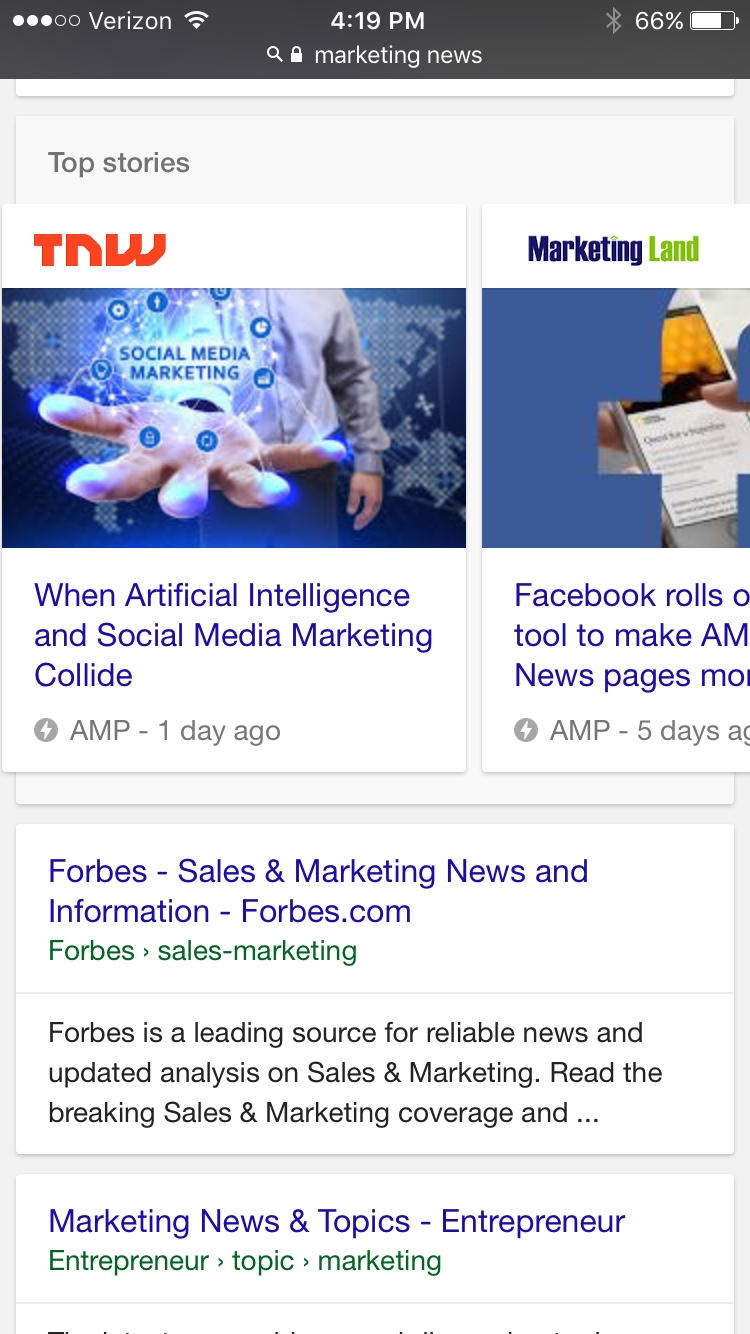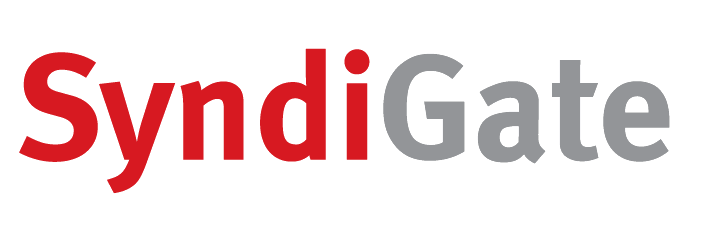
5 Easy Ways to Optimize Your Content Marketing Hub
by Victoria Golden – June 12, 2017
Your content hub is the home of your content marketing efforts.
It’s where most of your content lives, and it’s where you drive users. For many brands, it’s their strongest owned channel.
Yet, content hubs require ongoing upkeep. And too often, companies get caught up in other content marketing activities to make valuable hub enhancements and optimizations.
Don’t get me wrong – distribution, editorial excellence, and search engine optimization (SEO) are all integral to content marketing success. But you’ll see the strongest results from those tactics if you’re continually investing in and improving your content hub.
As NewsCred’s Senior CMS Technical Consultant, I work with enterprise brands to optimize their content hubs. I look at their goals and implement front and back end features that will help them achieve those objectives.
Here, I will explain some common optimizations – that don’t involve an overhaul or lots of development time. I’ll also detail how they will impact your program and how to easily implement them in WordPress.
Some may not be appropriate, given your business goals, whereas others can be helpful, regardless of your KPIs. But your team should make hub optimization a priority. You’ll see improvements in your content marketing, business, marketing spend, and relationship with customers and prospects.
Remove Dates
Even if a story is evergreen, readers may bypass it if they see it was written a year or two ago.
One simple solution: Remove publication dates from your content.
That article about starting a 401k in your twenties, or making a healthy pizza, will likely be relevant a year from now. You don’t want your visitors to see a date and overlook an article you edited upwards of five times and got through legal.
You’ll likely see the following results after removing dates from evergreen content:
- Increased pageviews
- Increased click-throughs on associated CTAs within or beside that article content
- Increased organic shares
- Lowered redistribution costs
- Lowered bounce rates
This strategy may not make sense for marketers who publish timely content. Rapidly changing or highly regulated industries whose content must retain dates can alternatively adopt an expiration strategy, where content programmatically gets removed from your website after a specified date.
WordPress Tip: You can usually remove the date or comment it out directly in your single.php file. (This is the file that controls the framework for your single post template.) However, your theme controls where the date appears throughout your content hub. The date, by default, is fetched through a line of PHP that looks like this: <?php the_time(‘F j Y’) ?>. If you are wary of touching any code, there are a number of plugins that can accomplish the same action like this one. As a rule of thumb, always test plugin installations on a staging site ahead of pushing to production as not all plugins are compatible with all themes.
Optimize for AMP
“AMP” stands for “Accelerated Mobile Pages.” These quick-loading articles are Google’s recent step towards improving mobile load times. In early 2016, Google officially integrated AMP-enabled pages into search results – and gave them preferential treatment at the top of search results pages by labeling them “top stories.”

Implementing AMP on your own site provides a significant SEO bump and can ultimately increase your organic search traffic from mobile devices. It also significantly increases page load speed, which in turn decreases bounces, increases engagement time – and further helps your SEO.
WordPress Tip: Implementing AMP on a WordPress content hub is currently the least code-heavy way of achieving these SEO-friendly pages. You can do so by installing and activating plugins like this. The plugin essentially creates a second version of each article on your hub. However, installing the plugin alone will likely not be sufficient. You will have to make some development tweaks within the AMP versions of your pages so your content appears correctly formatted. In order to achieve that rapid load time, AMP typically strips down article pages to their bare bones. You’ll have to make some tweaks to display CTAs, maintain image sizing, and load video content. For up-to-date information, consult Google’s official AMP Project Page.
Create Author Pages
If you have consistent authors, influencers, employees, or customers writing for your content hub, take steps to maximize their contributions.
Author pages consist of a headshot, bio, and all the content a writer has produced for a site. The bios typically include writers’ professional backgrounds and other publications they have contributed to in the past, which establish them as experts in the space. This gives your content more credibility by association. Each time a writer with an author page produces a new article, hyperlink the name to the page.
Author pages can also help your distribution. They’re valuable promotional tools for writers to share on their networks, rather than single article pages.
Wilmington Trust is a brand that has thoughtful author pages:
Don’t feel bound to creating author pages for all your contributors. Especially if you are leveraging licensed content on your hub, author pages may only make sense for a few of your contributors – and that is totally fine.
WordPress Tip: Authors on your site are actually “users” in the WordPress dashboard. You can pull information for the author page from here. You may need to add fields into the user setting page in order to capture additional information you want to display.
Implement an Exit Intent Pop-up
Hate pop-ups? As a content marketer looking for leads, you may not.
Unfortunately, everyone else does.
However, pop-ups are far and away the most effective form of lead capture.
There are ways to go about the pop-up that are less intrusive than the standard six-to-nine second delay regardless of the page a user is on. Don’t get me wrong, the six-to-nine second delay pop-up is effective, and that is why it remains the standard. But it is also the standard because it is the simplest to accomplish.
Alternatively, you can implement an exit intent pop-up that gets triggered when a user navigates towards closing the tab. This is instrumental in lead capture, usually for one of two reasons:
- Appreciation: At this point, users have completed their journeys uninterrupted by pop-ups, consumed worthwhile content, and have not been forced to sign up or reveal their companies’ names to do so. This may make them more apt to submit their information on their way out.
- CTA blindness: Users have completed their journeys and received value from the content. However, given the breadth of ads and CTAs during an average web journey today, they have not taken note of the newsletter sign-up on the right rail, in the footer, or even inline within the article text. The exit intent pop-up allows for a last opportunity to convert.
WordPress Tip: Optinmonster is a great tool to control your CTAs and has integrations with most of the major CRM systems like Eloqua, Marketo, and Pardot.
Use Open Graph Tags
Open graph (OG) tags let you control the content that flows through to social media channels once someone shares your content. Without these tags, you could be missing a ton of potential secondary shares simply because you don’t have a default image set for articles.
Social, holistically, is a massive distribution channel for both organic and paid. It is in your best interest as a business to use the various social platforms to their utmost potential.
All the major social channels use OG as their standard way of passing information, with the exception of Twitter, which released Twitter cards. However, if Twitter cards are not found on a site, they, too, default to OG tags in order to pull data. The standard tags are title, description, image, and URL – but the more the merrier. Below is a short visual/description of the standard tags, but many more are available like type and locale:
- og: title
- og: description
- og: image
- og: URL (This is how you set where to attribute your shares. This is useful in two ways: First, if you use licensed content, you will want to attribute shares to your syndicated version of the article in order to get accurate share counts; this does not have the same effect as canonical href tags on article pages themselves – that should be pointed at the original source for SEO best practices. Secondly, you can set URL parameters for paid campaigns so you can segment your analytics.)
WordPress Tip: Using the Yoast SEO plugin creates these by default and allows you to customize as you see fit. Here is a great quick tutorial on how it works and how to set a default image for articles that do not have a featured image already in place.
Your content hub is the home for all of your content marketing efforts, so treat it as such.
No one wants to stay in a house that is confusing to navigate or cluttered with old stuff – make sure your hub incorporates UX best practices like the ones above. A smooth user journey is beneficial to your visitor and your business objectives.
It is important to remember the first step toward deciding which optimizations make sense for your hub is by identifying the overall business goals of your content marketing program. Without knowing what you are working towards it is easy to gravitate toward what is shiny and easy versus what is measurable and valuable.
Victoria Golden is the Senior CMS Product Manager at NewsCred.
Categories
- Accounting, Payments & Performance (6)
- Content Buyers (7)
- Content Delivery Options (6)
- Content Marketing (3)
- Content Marketing For Brands (20)
- Content Owners (20)
- Content Specifications (3)
- Content Strategy (3)
- Copyright (1)
- General (2)
- Knowledge Base (64)
- Licensed Content (5)
- News (1)

